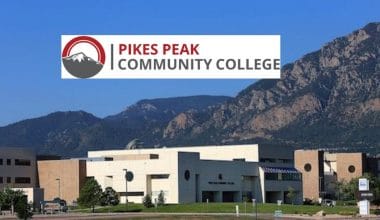The conventional wisdom is that 80% of jobs are never advertised. In this sense, it is obvious that it is essential to have a professional presence online and establish fast links. A LinkedIn profile for students is an essential social media presence one must-have.
Think of LinkedIn as your CV that never sleeps. But a lot more. It’s your professional brand in the world. This is the result that you are really looking for when you Google (what they will do!).
It’s your identity with employers, graduate schools, future colleagues and people you want to keep in touch with. Including the “old people” who might well hire you one day.
And LinkedIn is the place to find and be found. The site has more than one and a half million student jobs and internships. And over 9 in 10 companies use LinkedIn to recruit new employees.
If you are not on LinkedIn, you do not exist in the world of work.
Table of contents
- How to make a LinkedIn Profile for Students
- Choose a professional photo
- Write a catchy headline and summary
- Don’t sound desperate
- It sounds Approachable
- Be smart about your experience
- Powerful Recommendations (Social Proof)
- Add (or Update) Contact Information
- Delete irrelevant information
- Be Active
- Customize your URL
- Build a strong network so it’s there when you need it
- EDITORS’ RECOMMENDATION
How to make a LinkedIn Profile for Students
Choose a professional photo
Profiles with photos generate more matches and views, and the best photos give better results. Introduce yourself as you would for your best client, board and/or CEO. Soft lighting, neutral backgrounds and special attention to hair, jewelry, and costumes are usually the best options.
Avoid bright facades and choose clothes and background colors that match your personality and target roles. Above all, make the audience want to meet you (virtually or not). In enhancing a LinkedIn profile for students, choose the right professional photo.
Write a catchy headline and summary
This is a short and memorable professional slogan. This is the only thing you would like a recruiter, hiring manager or future colleague to know about you.
Tell them what excites you now, and if you can say it succinctly, what you want to do in the future. For example: “A student specialized in market research” or “An engineer creates revolutionary consumer products”.
Do you need ideas? Take a look at the profiles of colleagues you admire or recent students. The great LinkedIn Alumni tool is a great way to find talented graduates.
It allows you to address your school’s alumni according to your workplace, place of residence, etc. Most students will be happy to respond to a request for a student’s login or a new graduate who has a shared alma mater.
Don’t sound desperate
Even if you are unemployed and desperate, do not use “active search for opportunities” as a title. As on the dating front, desperation is not a good idea for a person seeking work.
People want to sponsor (and hire) someone who is in demand (that is, someone else wants too), so look and talk about the part in your LinkedIn presence. Yes, it is often a game but a game to win. Indicate your value, not your needs.
It sounds Approachable
The first person is often recommended to be more interactive and attractive, although some professionals prefer a third-person summary.
While maintaining its professionalism, it seems to someone that recruiters, clients, and other potential contacts would like to know.
Avoid jargon, unless you are only looking for the roles for which the jargon is expected (that is, only foreigners use the long form of a sentence).
Be smart about your experience
List the jobs you have performed and a brief description of your responsibilities and what you have accomplished.
You can choose to do more or less detailed than your resume. What really matters is that you do not skip the essential details of your professional record.
If you have held several jobs somewhere (including a promotion), list them all with a date so people can see your progress and take on more responsibilities. You can even add work projects, photos, or videos to specific tasks listed.
The recommendations are important on LinkedIn because they give an external opinion about their abilities and personality. The first step is to make sure you get the recommendation from the right people, who worked closely with you and can talk about your strengths.
The next step will be to make sure that the selected person writes the recommendation in a way that improves their skills and achievements. Also ask them, if applicable, to mention their general skills, such as their leadership qualities, time management skills, etc. This will help you analyze your profile globally.
Add (or Update) Contact Information
Make sure your email, phone number (if you feel comfortable), website and other—professional!—social media platforms are listed on your profile. Remember: LinkedIn InMail is only available to Premium users, and you want to ensure anyone can contact you about great opportunities.
Delete irrelevant information
When your replay is over, delete the Twitter account you never use and the website from two previous jobs. Remove your high school unless it is very recognizable and helps you make connections. Consider simplifying previous jobs unless they contain valuable keywords or experiences explaining your career history.
Be Active
LinkedIn activity increases your score on algorithmic search results (user participation is good for the platform and a critical part of LinkedIn’s business model).
Post relevant information or “similar” comments and contributions publicly or in relevant groups. LinkedIn is not Facebook; The messages aimed at companies set the tone. If you have the sense to write, add an article on LinkedIn Pulse.
A relevant article or a well-placed commentary that generates respect from the right audience could be the beginning or growth of an excellent business relationship.
Customize your URL
The LinkedIn URL should look like this: LinkedIn.com/in/yourname. If your name is taken, try a combination with initials or otherwise.
For instructions, see LinkedIn Help or type “LinkedIn Custom URL” into a search engine. Once your personalized link, you can include it in your CV and/or your electronic signature.
While your profile can be refined to promote your experience, personal value proposition and other variables, these universal tips provide the basis for greater credibility and discovery on LinkedIn.
Build a strong network so it’s there when you need it
80% of job offers are never published.
So, how do you increase your chances of knowing them? For who you know in fact, based on pure numbers, it probably won’t be who you know, but who they knew..
Do you remember the concept of the network effect of the Econ class? This is the true power of LinkedIn.
It does not maximize your value if you do not create a network that can work for you, whether it’s looking for a job, connecting with someone who can help you or watching interesting content you can do. A better professional person in your field.
EDITORS’ RECOMMENDATION
- 8 Vital Tips That Can Boost Your CV As An International Student
- 125 Most Powerful Motivational Quotes for Students |
- 21 Easiest Courses at Havard University
- Top 100 Universities in UK to Study
- Top 10 Most Searched Universities on Google in the World
- Top 10 Youngest PhD Holders In History
- Pharmacology vs Pharmacy: Amazing Differences You Must Know
- 10 Easiest Courses at Waterloo University
- 30 Affordable Colleges with the Best Study Abroad Programs
- Edx vs Udemy: What is the best e-learning platform?
- Top 10 Most Searched Universities on Google in the World
- 10 Public Health Scholarships in Finland for Students from Developing Countries





